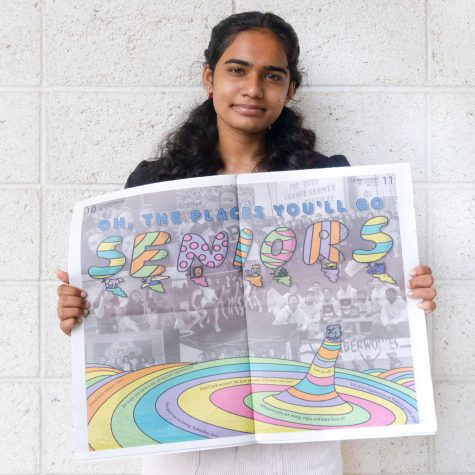The Saddening Reality of Sikh Representation
Photo Courtesy of Mehar Gulati
Senior Mehar Gulati is seen helping in a local food drive as a form of seva. Seva refers to the act of selfless service for altruistic purposes on behalf of the betterment of the community. This is an important practice which many Sikhs, like Gulati.
Dastārs, religious head coverings that symbolize humility, are worn by many practicers of the Sikh faith – the world’s fifth-largest religion with over 25 million followers – and are just one of the many unique traditions of the religion, according to World Cultures and Religion. Its followers play a grand role in Asian American spheres through “sewa,” or the devotion of one’s life to community service.
Despite their influence, Sikh-Americans continue to fight against underrepresentation within social justice movements. This battle for equal rights in terms of religion has strived all through the 20th and 21st century for many Sikhs, according to Times.
Federal Bureau of Investigation’s 2020 annual report on hate crimes highlights that Anti-Sikh hate crimes hit a record high of 67 documented incidents in the United States, reflecting a 37% increase from 2019, despite an overall decrease in the number of anti-religious hate crimes.
“The record number of anti-Sikh hate crimes underscores the concerns of the Sikh American community and need for investment in our community,” Kiran Kaur Gill, executive director of the Sikh American Legal Defense and Education Fund (SALDEF), said to the Times. “Twenty years after the backlash inspired by the attacks of September 11, it is saddening to see communities continue to be targeted because of their faith and background.”
In the wake of anti-Muslim resentment that proliferated after the terrorist attacks on Sept. 11, 2001, Sikhs were often mistaken for Muslims primarily due to their turbans and dastārs. This misunderstanding eventually led to a surge of many violent attacks and discrimination against Sikhs that continues today.
“Younger guys, they wear a different kind of turban where there’s like a button on the top of their head,” senior Puneet Singh said. “Some of my friends have had that pulled, or they had the cloth on their head ripped off. Even my uncle, and he got gum put in his hair when he was younger.”
From textbooks to stereotypes, Sikh people experience their identity being minimized and warped as a result of a lack of education on Sikhism. Due to the absence of representation and understanding of the Sikh religion, hate crimes against Sikhs still prevail, according to Singh.
“In history classes, when we read our textbooks, it’s really great when I do see something about Sikhism, right? But I’ve only seen maybe, like, one paragraph in textbooks,” Singh said. “I think if there was more taught in school and just emphasis on how big the religion is, then I bet a lot of people would know about it, and there will be less times where someone asked me, ‘Oh, why do you have such long hair?’”
Sikhs continue to fight for representation in the media to preserve their way of life with organizations like the SALDEF who strive to eliminate misrepresentation of Sikh communities and increase religious equality overall.
“Representation through media can honestly help change a lot,” sophomore Sehaj Sethi said. “Their voices can be heard. A lot of crimes that happened today wouldn’t actually occur. If more media were to gain knowledge about Sikhism and the cultures, many misunderstandings wouldn’t happen. I just hope that if more people know about this stuff, more information can be shared.”
Your donation will support the student journalists of Portola High School. Your contribution will allow us to purchase equipment and cover our annual website hosting costs.

Dheeksha Bhima Reddy is the co-Editor-in-Chief for her third and final year on the Portola Pilot. Through her newfound obsession of drinking coffee (cold...

Sidra Asif is the Back Page Editor and Social Media Manager for her third year on the Pilot. Outside of creating content for the newspaper, you can find...




